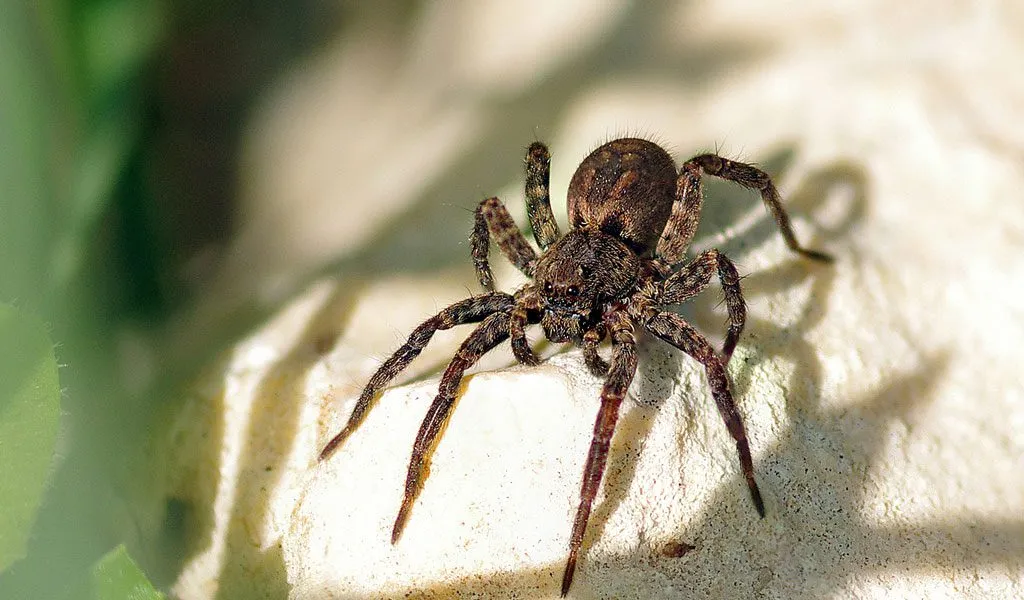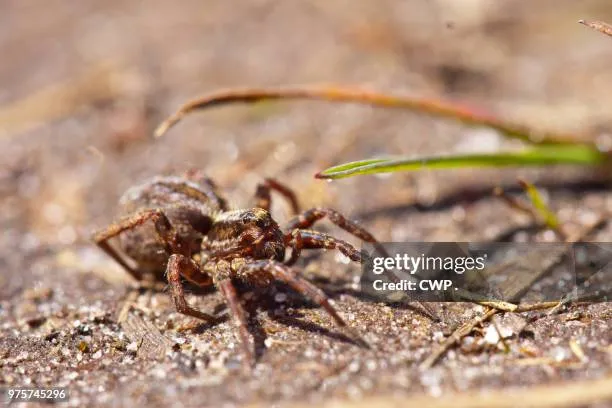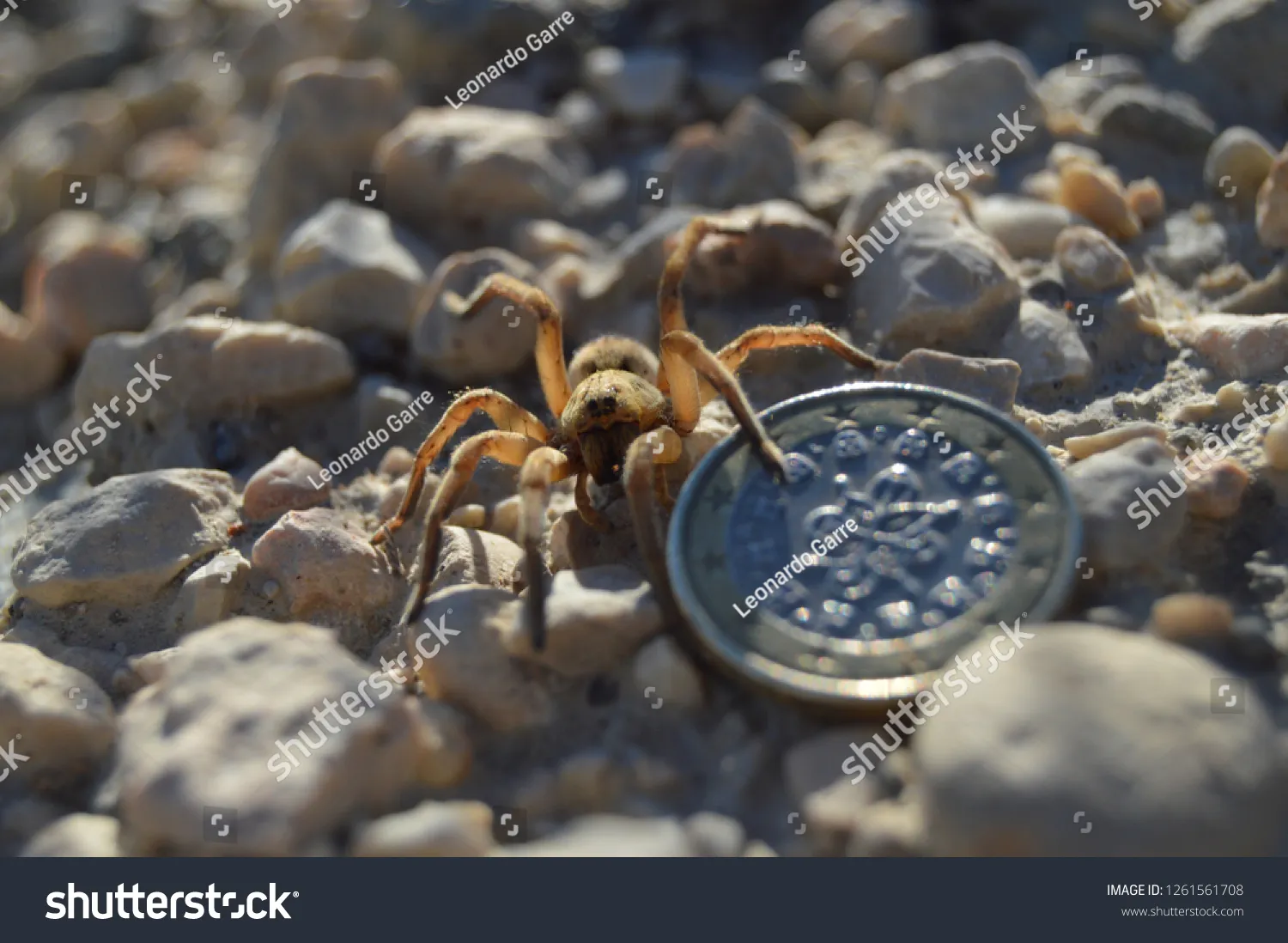What is a Wolf Spider
Wolf spiders, belonging to the family Lycosidae, are robust and agile hunters. Unlike many spiders that spin webs to catch their prey, wolf spiders actively pursue their meals, relying on their speed and keen eyesight. They are solitary creatures, often found roaming on the ground or in low vegetation. Their name comes from their hunting behavior resembling that of wolves, stalking and chasing after their targets. Wolf spiders are found across the globe, adapting to various environments, and play a vital role in controlling insect populations. Understanding their lifestyle provides insights into their longevity and ecological impact. The wolf spider’s existence is a testament to nature’s adaptability and survival.
Physical Characteristics of a Wolf Spider
Wolf spiders are easily identifiable by their physical traits. They have eight eyes arranged in three rows, a characteristic that aids in their excellent vision. This unique eye arrangement allows them to spot prey and avoid predators effectively. Their bodies are typically covered in hairs, providing sensory information and allowing them to detect vibrations. These spiders come in various colors and patterns, often blending with their surroundings. The males are usually smaller than the females, and some species display striking markings, particularly during mating season. Their strong legs are designed for running and jumping, essential for their hunting strategies, making them well-adapted predators in their habitats. These characteristics define not just their physical presence but also their hunting capabilities.
Size and Appearance

The size of wolf spiders varies significantly depending on the species. Some are relatively small, with a body length of only a few millimeters, while others can grow to be quite large, with bodies reaching over an inch in length, not including their legs. Their appearance also differs greatly. They can be gray, brown, black, or a combination of these colors. Many have stripes or patterns on their bodies that provide camouflage in their natural habitats. These patterns help them blend in with the leaves, soil, or other surroundings where they hunt and hide. Understanding the size and appearance helps in the identification and study of various species.
Habitat and Geographic Distribution
Wolf spiders are found in a wide range of habitats and geographic locations. They inhabit grasslands, forests, deserts, and even urban areas. Their adaptability allows them to thrive in diverse environments, from the Americas and Europe to Asia, Africa, and Australia. They prefer areas with ample ground cover, such as leaf litter, under rocks, or in burrows, which provide protection from the elements and predators. The distribution of wolf spiders is influenced by factors like climate, prey availability, and the presence of suitable shelter. This wide distribution showcases their remarkable ability to colonize and survive in various ecosystems. Understanding the habitat requirements helps to ensure their survival.
Factors Affecting Wolf Spider Lifespan
Several factors influence the lifespan of a wolf spider. These factors range from environmental conditions to the presence of predators and the spider’s diet. Understanding these influences provides insight into the survival strategies and the factors that impact their longevity. The interplay of these elements creates a complex web of survival that dictates how long a wolf spider can live. Factors like food availability, environmental hazards, and health all contribute to their overall lifespan. Wolf spiders face a constant struggle for survival, and these factors determine their chances of reaching their full life potential.
Environmental Conditions

Environmental conditions play a significant role in a wolf spider’s lifespan. Temperature and humidity levels can dramatically affect their metabolism and overall health. Extreme temperatures, whether hot or cold, can shorten their lifespan. Harsh weather conditions, such as droughts or floods, can also impact their survival by affecting their food supply and habitat. Furthermore, exposure to pollutants and pesticides can be detrimental. Wolf spiders thrive in stable, moderate environments. Ensuring stable conditions, like providing adequate shelter from extreme temperatures and avoiding exposure to harmful chemicals, is crucial for maximizing their lifespan and ensuring their long-term survival. Environmental stability greatly influences their survival.
Predators and Threats
Wolf spiders face numerous predators and threats throughout their lives. Birds, reptiles, amphibians, and larger spiders all prey on them. Parasites, such as mites and wasps, can also infest wolf spiders, weakening them and reducing their lifespan. Human activities, including habitat destruction and the use of pesticides, pose significant threats. Predators and threats can impact their survival and limit their longevity. Protection from predators and threats through habitat conservation and careful management of pesticide use can help ensure the wolf spider’s survival. Awareness of these threats is crucial to ensure their continued existence.
Diet and Nutrition
A wolf spider’s diet directly affects its lifespan. They are carnivorous and primarily feed on insects, other spiders, and small invertebrates. The availability of prey in their habitat plays a crucial role in their survival. Adequate nutrition is essential for growth, reproduction, and overall health. A varied diet that provides essential nutrients supports their immune system, making them more resistant to diseases and stressors. In captivity, providing a diverse diet of appropriately sized insects can help prolong their lifespan and keep them healthy. Regular feeding and a diet that meets their nutritional needs significantly improve their chances of living longer and thriving.
Average Lifespan of a Wolf Spider

The average lifespan of a wolf spider varies depending on the species, sex, and environmental conditions. Generally, female wolf spiders tend to live longer than males, often surviving for one to three years. Males typically have shorter lifespans, often just a few months to a year, primarily due to their role in mating and the risks associated with their hunting lifestyle. Some species can live even longer, especially in controlled environments like captivity, where they are protected from predators and have a consistent food supply. In the wild, harsh conditions and the constant threat of predation shorten their lifespans, making the average lifespan of most wolf spiders relatively short compared to other arachnids. However, under optimal conditions, wolf spiders can live for a considerable amount of time.
Lifespan in the Wild vs Captivity
The lifespan of wolf spiders differs significantly between the wild and captivity. In the wild, wolf spiders face numerous challenges, including predation, harsh weather conditions, and the constant struggle to find food. These factors can dramatically shorten their lifespan. In captivity, wolf spiders are provided with a controlled environment, which means a stable temperature, humidity, and a consistent food supply. This protection from predators and environmental stressors extends their lives. Captive wolf spiders can often live much longer than their wild counterparts, sometimes up to several years. Understanding these differences highlights the importance of environmental conditions and the impact on overall longevity.
Differences in Lifespan by Species
The lifespan of wolf spiders varies considerably depending on the species. Some species, especially those found in more stable environments or with less exposure to predators, tend to live longer than others. Larger species of wolf spiders often have longer lifespans than smaller ones, which is linked to their slower metabolism. Certain species have adapted to specific habitats and life cycles, which influence their longevity. Factors such as reproductive strategies, the availability of resources, and the presence of specific threats impact their life spans differently. For instance, the species’ survival greatly influences how long they can survive in particular environments, demonstrating the complexity of their adaptation.
How to Care for a Wolf Spider

Caring for a wolf spider in captivity involves providing a suitable environment that mimics their natural habitat and meets their basic needs. It is a rewarding experience for those interested in observing these fascinating creatures. Proper care ensures their health and increases their chances of living a long, healthy life. This includes creating a comfortable enclosure, providing an appropriate diet, and maintaining a clean environment. Understanding their needs is crucial for their well-being. Observing and maintaining their habitat is essential.
Creating the Right Environment
To create the right environment for a captive wolf spider, start with a suitable enclosure, such as a terrarium. The size should be appropriate for the spider’s size, with enough space for movement and exploration. Provide a substrate of soil, peat moss, or coconut fiber to mimic their natural habitat and allow them to burrow. Add decorations like rocks, branches, and leaf litter to create hiding places and enrichment. Maintaining the correct temperature and humidity levels is crucial. Use a thermometer and hygrometer to monitor conditions. Ensure that the enclosure is well-ventilated and free from harmful chemicals, providing a safe and stimulating environment.
Feeding and Nutrition
Feeding your wolf spider involves offering a diet of live insects appropriate for its size. Crickets, mealworms, and small roaches are popular choices. The frequency of feeding depends on the spider’s age and size. Younger spiders require more frequent feedings than adults. Avoid overfeeding, which can lead to health problems. Provide a shallow dish of fresh water at all times. It’s important to remove uneaten food to prevent the growth of mold and bacteria. Providing a varied diet ensures that your wolf spider receives the necessary nutrients for a long and healthy life. This is essential for the spider to thrive in captivity.
Common Health Issues

Wolf spiders in captivity can experience a few common health issues. These include dehydration, which can be prevented by providing access to fresh water, and issues related to improper molting. Ensure that the humidity levels are suitable for molting. Parasites and mites can also infest captive spiders. Quarantine and proper hygiene can reduce the risk of diseases. Regular observation of your spider is crucial for detecting any signs of illness. If you notice any unusual behavior or symptoms, consult with a veterinarian specializing in exotic animals. Awareness of potential health problems helps to provide the best possible care, ensuring their overall well-being.
Conclusion
Understanding the wolf spider’s lifespan provides valuable insights into their survival strategies and ecological importance. Wolf spiders, with their varied lifespans, adapt to the environmental conditions around them, where the female wolf spider tends to live longer than the males. The environment plays a key role in how long they can survive. By learning about wolf spider lifespans, we can better appreciate these creatures and contribute to their conservation, ensuring the long-term survival of these fascinating arachnids. This knowledge allows us to protect and support their survival.
